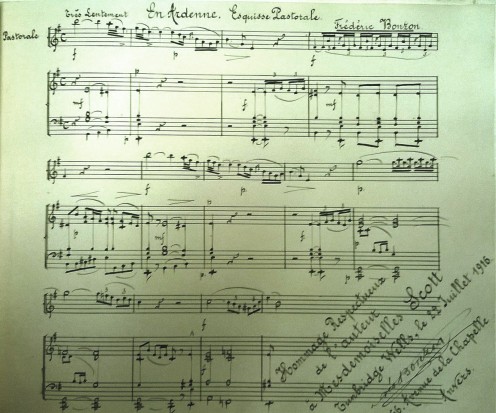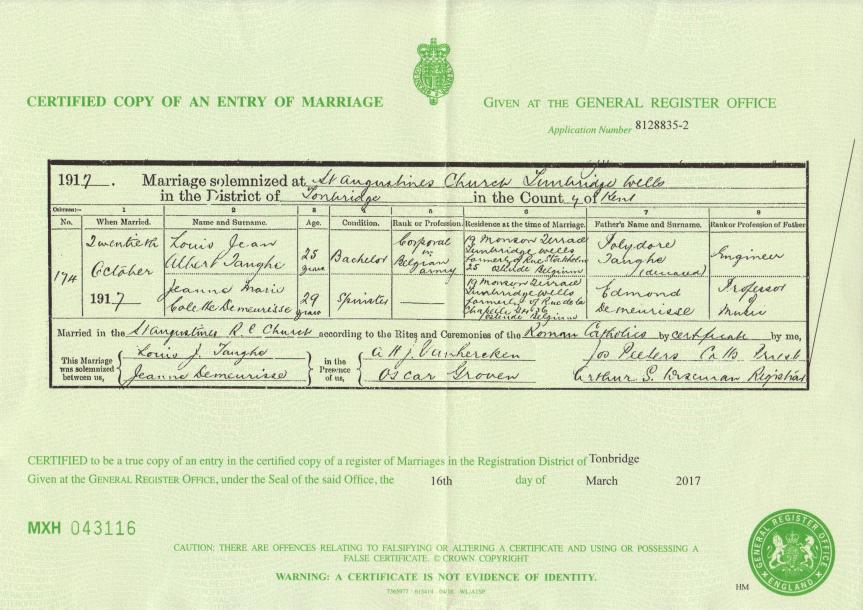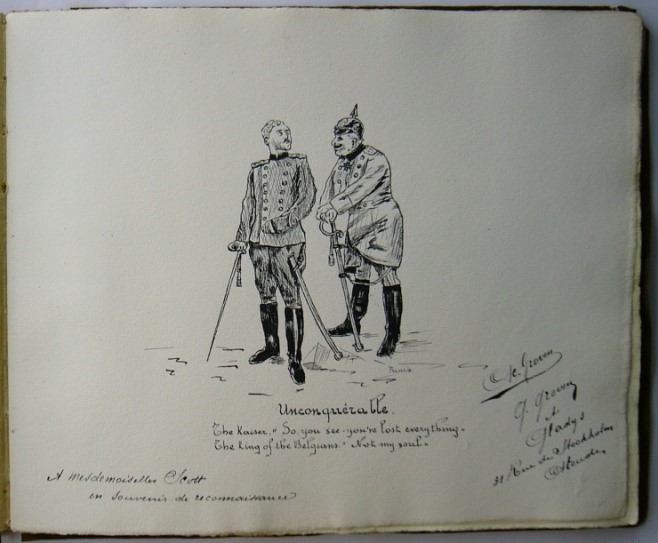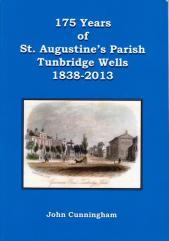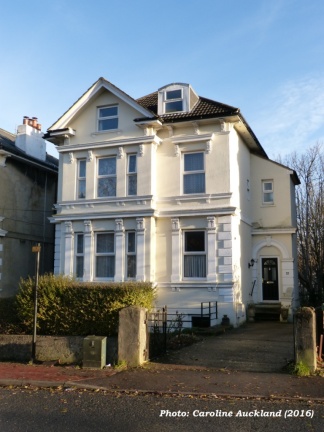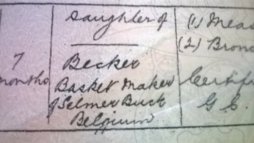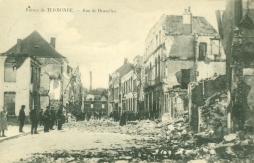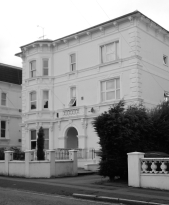100 years ago today, 19th July 1919, was the day designated as Peace Day and was celebrated in Tunbridge Wells just as it was all over the country. All of the Belgian Refugees in the town had returned home a couple of months earlier, but nonetheless I thought I couldn’t let the day go by without writing something (mostly a precis of the article which appeared in the Kent & Sussex Courier, 25th July 1919).
Although November 1918 had marked the end of the fighting in Europe, negotiations were to continue at the Paris Peace Conference until 1920, and the Treaty of Versailles (Wikipedia links) wasn’t signed until 28th June 1919. As negotiations advanced, and a real prospect of peace was in sight, a committee was formed, chaired by Lord CURZON, to decide how to mark and celebrate the end of the war, and Saturday 19th July was declared a Bank Holiday and a public holiday.
‘We, considering that, with a view to the more wide-spread and general celebration of the Conclusion of Peace, it is desirable that Saturday, the Nineteenth day of July instant, should be observed as a Bank Holiday and as a Public Holiday throughout the United Kingdom’
Proclamation by King George V, 11th July 1919 (London Gazette)
Not everyone was happy about the proposed celebrations, considering that the money would better spent supporting returning servicemen. In addition, the servicemen were not necessarily included in the celebrations – in Tunbridge Wells it was decided to give them their own celebration later in the year when all were returned home, and this seems to have been generally acceptable (though there is some evidence from local press reports that the Mayor, Councillor Robert Vaughan GOWER, OBE, did receive some criticism for this decision), unlike in Luton for example – as I write I am listening to a report on BBC Radio 4’s World at One about how soldiers, rightly angry at being excluded from the main celebrations in the town, rushed the Town Hall and burnt it down.
Tunbridge Wells celebrations
But not so in Tunbridge Wells, where over six hundred flags were used to decorate the Town Hall on the corner of Calverley Road and Calverley Street – there were Union Flags and French tri-colours, and a “well-arranged group” of flags of the allied nations. There were decorations all over the town – private houses and local businesses alike decorated their buildings and there were Venetian flagpoles and flags and streamers all around the town. Three stunning triumphant arches were erected on Camden Road, and one at the top of Mount Pleasant.
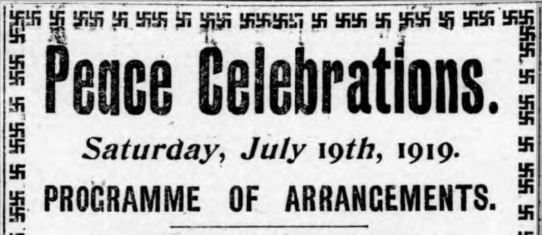
When the day came, the whole town celebrated, and many pages of the Kent & Sussex Courier were devoted to accounts of the day in Tunbridge Wells as well as in the surrounding villages.
Festivities began at 8am with a “joy peal” on the newly-re-installed bells of St Peter’s Church, and those of St Augustine’s too, after which there was a short choral service of praise and thanksgiving in a packed King Charles Church where the flags of the Allies were carried in procession by the boys of the choir and their choirmaster. Early morning services took place in several other churches around the town, before everyone lined up in the streets around Grosvenor Bridge, Quarry Road, for A Grand Procession at 10.30am.
This was, according to the Courier, “one of the longest processions the borough has ever witnessed”, and indeed so long that at one point on its extraordinarily circuitous journey [1] to the Lower Cricket Ground on the Common, “the tail of the procession met its head”. The Courier was clearly pleased to report that this “familiar incident of the boa constrictor endeavouring to swallow itself” only happened once!
The procession was headed by members of the Borough Police, followed by banner bearers, then the local King’s Rifle Corps cadets. Next came decorated cars “in the familiar style of decorated automobiles in the South of France at Carnival time” (a point of reference which presumably meant something to the Courier’s readers!). These carried wounded soldiers and V.A.D. nurses – the only women who took part in the procession, despite the fact that a special request had gone out for women to join its ranks and “demonstrate their share in winning the war”. Maybe they were all holding the fort back home…
The Tunbridge Wells Veterans’ Association and band led a contingent of discharged and demobbed soldiers and sailors, the Skinner’s School OTC and band followed, then the local corps of the Volunteer Battalion of the Royal West Kents. Next came the youngsters – Boy Scouts, Boys’ Brigade, and the Girls’ Life Brigade – followed by representatives of the Postal Service and the Railwaymen (those who weren’t keeping the trains running).
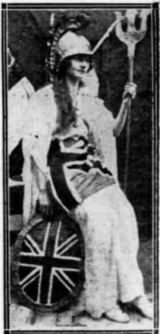
The town’s Friendly Societies came next with their colourful regalia and banners, alongside 3 tableaux cars: “Peace with Honour”, “Britannia and her Colonies” and the Gardeners’ Society whose float recalled the importance of home food production.
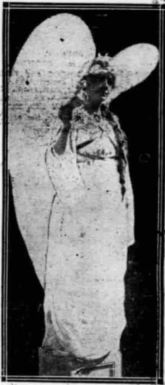
The local tradesmen’s decorated carts included a dray from Messrs E & A Kelsey‘s, a Burlesque Fire Brigade, and a delivery cycle ridden by a small boy, Master Coleman, with the motto “Justice for the Tommies, not Charity”. School children followed behind, the girls all in white carrying garlands and baskets of flowers, and the boys, Union Flags. The Local Fire Brigades and the Salvation Army were the last groups before a series of “carriages and motors” brought the Town Council, local magistrates, clergy of all denominations and representatives of local Associations, led by a detachment of the Borough Constabulary including the newly established Policewomen [2].
Three more cars carried the Mayor and Mayoress, Town Clerk, and Mace-bearer; the Deputy Mayor and Mayoress; and former Mayor, Councillor EMSON who had been Mayor 1913-1917 and did so much to help the town’s Belgian refugees, and Mrs EMSON, respectively.
Soon the Lower Cricket Ground was a “sea of faces” in all directions. Schoolgirls carrying floral letters lined up to form the word “PEACE” and the Memorial Service began with the reading of the King’s Proclamation of Peace, and then of a letter from the King to the Lord Lieutenant, Marquis CAMDEN, expressing his gratitude an admiration for the Soldiers, Sailors, and Airmen of Kent. Hymns were sung and prayers said, and then came the Last Post and the dipping of the flags, before rousing cheers went up for the King, for the brave men who fought, and for the Mayor and Mayoress.
In the afternoon, there were Old English Sports on the Common for the Adults and amusements in the Calverley Grounds for the children. It seems the Women’s Tug of War was one of the “most exciting events” of the former (the Married Women’s team beat the Single Women’s…), and their Sack Race “a novelty”. The children were treated to tea in the schools and parish halls and the leftovers donated to St George’s Home for Boys an the Children’s Convalescent Home in Hawkenbury.
Sadly rain set in in the evening and the Children’s Festival of Song as well as the Fancy Dress Parade had to be postponed till Wednesday 30th. Instead the Peace Orchestra and Peace Choir of 200 adult voices gave 3 short concerts in the Great Hall, after which judging of the decorated floats took place near the Spa Hotel, young cyclist Master COLEMAN winning second prize in his class. Despite the rain, the planned bonfire lighting took place at 11pm, and dancing continued until well after midnight.
The postponed Peace Festival of Song took place on 30th July in the Calverley Park Meadow as planned, and the Courier declared “A prettier spectacle has never been witnessed in Calverley Park”. A Children’s Choir of 2,000 young voices made up of contingents from all the schools in the town sang alongside the Adult Peace Choir under the baton of Mr Francis FOOTE. The concert was a huge success, and a letter of thanks from Mr Foote, published in the Courier, concluded “I am sure I should be voicing the feelings of thousands of our townspeople when I suggest that we give a similar Festival of Song every year on Peace Thanksgiving Day“…
20 years and 16 days later the country was to be again at war.
[1] The route of the procession was as follows : Grosvenor Bridge, Quarry Road, Camden Road, Town Hall (Calverley Road), Crescent Road, Mount Pleasant, Monson Road, Calverley Road, Mount Pleasant, High Street, Kentish Corner, London Road, Grosvenor Road, General Hospital, Church Road, Common – Lower Cricket Ground.
[2] Women’s Patrols were recognised by the Home Office in May 1918 and at a meeting of Tunbridge Wells Borough Council on 7th June 1918 a question was raised about the appointment of three policewomen. They were paid 35/- weekly plus war bonus which meant 43/6d per week, and fulfilled the same duties as men (Kent & Sussex Courier).

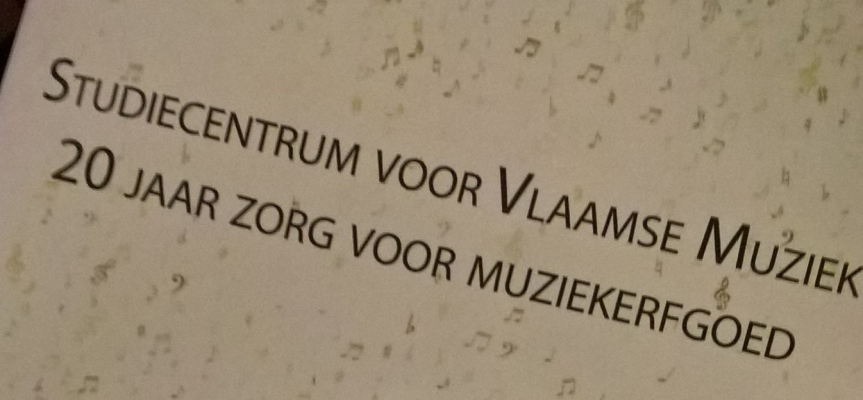



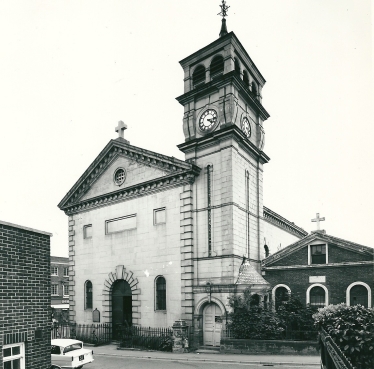
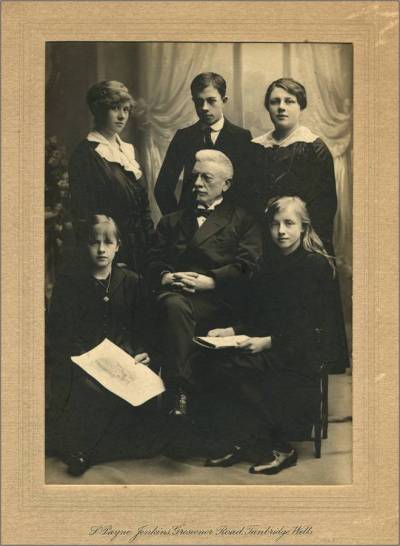
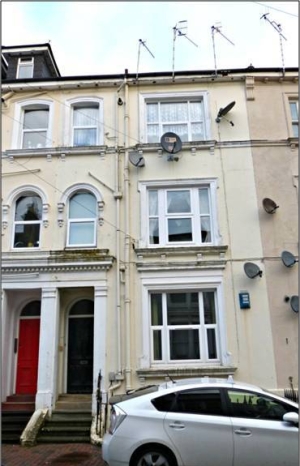
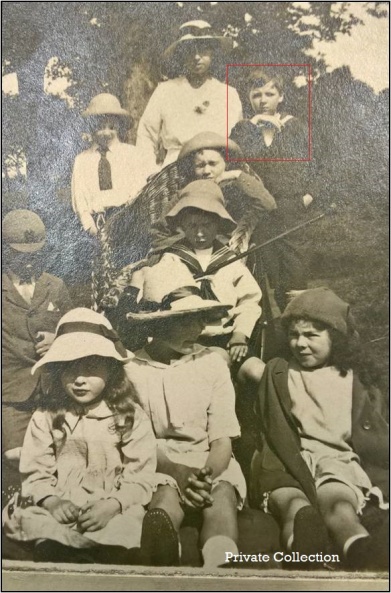 The photo belongs to the LIMPENS family, descendents of the MEEUS-HAVENITH family from Wynegem, whose grandparents are also in the photo – see the little boy in school uniform – probably Frederic MEEUS. Schooling was provided free of charge in local primary and secondary schools, but there was also a Belgian School in Tunbridge Wells, set up – probably in a private house – in early 1918 to provide instruction in French and Flemish to the children, alongside their English education.
The photo belongs to the LIMPENS family, descendents of the MEEUS-HAVENITH family from Wynegem, whose grandparents are also in the photo – see the little boy in school uniform – probably Frederic MEEUS. Schooling was provided free of charge in local primary and secondary schools, but there was also a Belgian School in Tunbridge Wells, set up – probably in a private house – in early 1918 to provide instruction in French and Flemish to the children, alongside their English education.
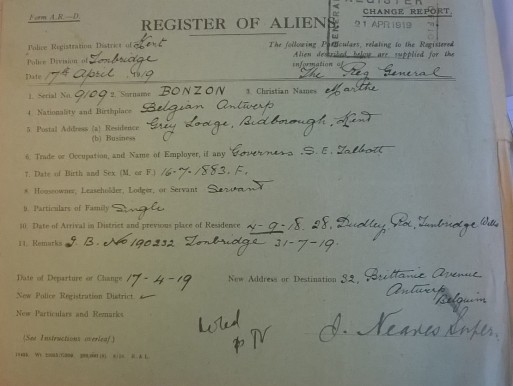

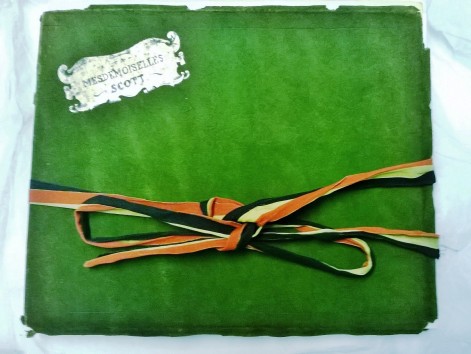 and that is a souvenir album signed by some 180 Belgians and presented to two Tunbridge Wells sisters, Amelia and Louisa Scott, who both worked tirelessly to help the refugees from Belgium.
and that is a souvenir album signed by some 180 Belgians and presented to two Tunbridge Wells sisters, Amelia and Louisa Scott, who both worked tirelessly to help the refugees from Belgium.